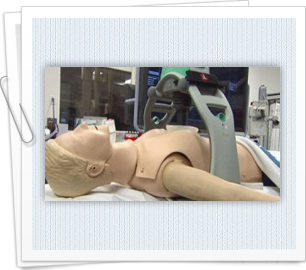Online CPR Certification Blog
Lives can be saved by just CPR videos
Date: November 18th, 2013
 According to the study, people who viewed a demonstration showing what needs to be done during a cardiac arrest had a better idea on the action they should take in such a situation compared to those who didn’t. The lead author for the study, Dr. Bentley Bobrow, one of the top causes of death among most people in United States is cardiac arrest. The researchers aimed at figuring out effective and novel ways that could assist the public in understanding cardiac arrest more and be able and willing to perform CPR or cardiopulmonary- resuscitation. People can now watch the one minute video at the comfort of their home or through their phone while pumping gas.
According to the study, people who viewed a demonstration showing what needs to be done during a cardiac arrest had a better idea on the action they should take in such a situation compared to those who didn’t. The lead author for the study, Dr. Bentley Bobrow, one of the top causes of death among most people in United States is cardiac arrest. The researchers aimed at figuring out effective and novel ways that could assist the public in understanding cardiac arrest more and be able and willing to perform CPR or cardiopulmonary- resuscitation. People can now watch the one minute video at the comfort of their home or through their phone while pumping gas.
Importance of CPR during cardiac arrest
According to Bobrow was quick to note that the video was capable of saving thousands of lives. Each year, over 300, 000 cases of cardiac arrests happen in United States outside the hospitals and less than 30% of these victims end up getting CPR from bystanders. CPR provided by a bystander can go a long way in doubling or even tripling the rate of survival of the person with cardiac arrest, according to the study findings. The rates of survival which widely varies among communities can range between 3 percent and 15 percent according to Dr. Michael Sayre of Ohio State University who is also the spokes person of American Heart Association.
A lot of the variation in this rate is highly associated with CPR. Most people don’t know exactly what they need to do in such a situation and don’t feel comfortable either. The study strongly shows that just a short message can go a long way in getting people able to provide effective CPR. This study majorly focused on the impact of showing videos referred to as the hands- only CPR and meaning 911 bystander calls and manually pumping the hear with deep, rapid chest compressions without involving mouth to mouth breathing. Hands only resuscitation method has proven to be equally effective just as the complex CPR method that also involves mouth to mouth kind of resuscitation.
Resuscitating a person during a cardiac arrest
After a person has collapsed, people do not have confidence to act immediately and some of them aren’t willing to resuscitate the person through mouth to mouth breathing, especially if the person is a stranger. However, it can be very disastrous not to do anything and there is no harm in an untrained layperson trying to help the patient. According to the researchers, the one minute video can be shown in movie theatres, on the Internet as well as at sporting events and at any other places with a large gathering of people. With cardiac arrest being so common, it is essential that people change their when it comes to giving CPR.